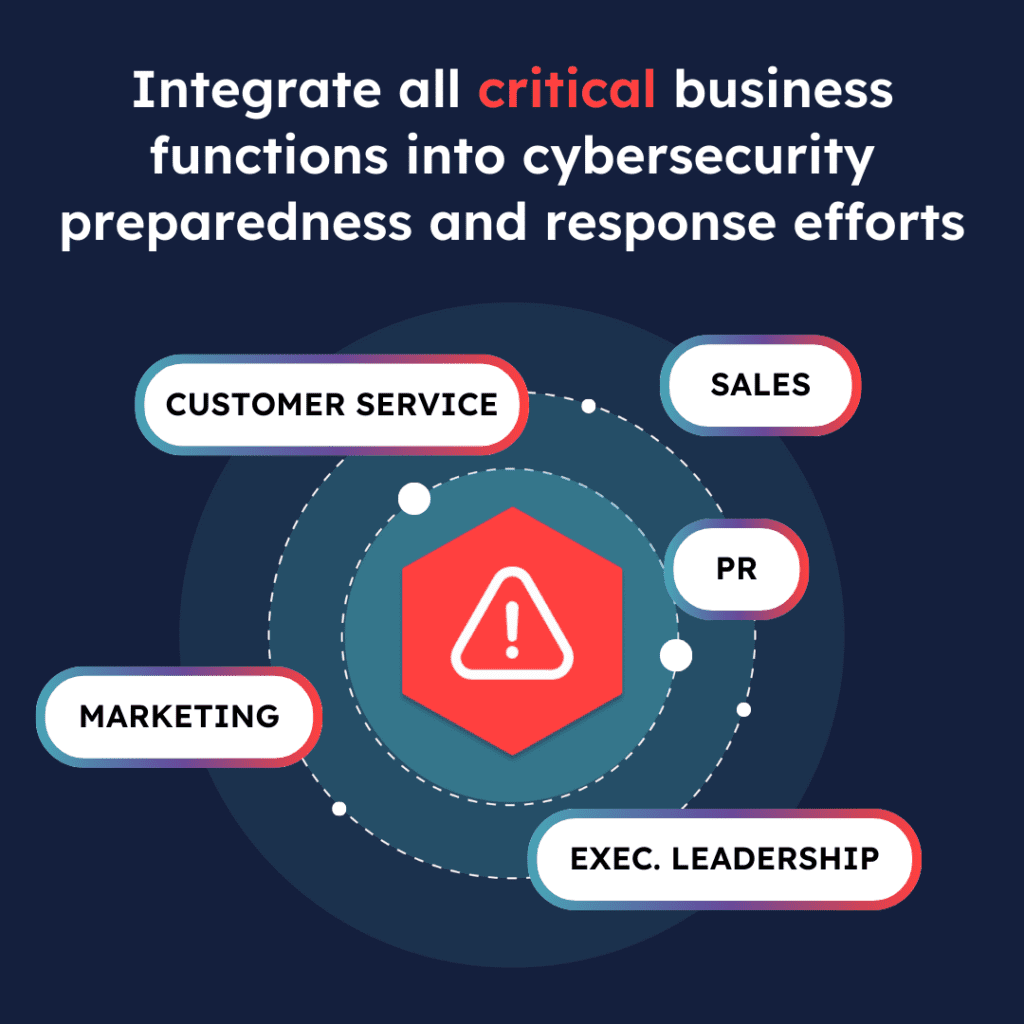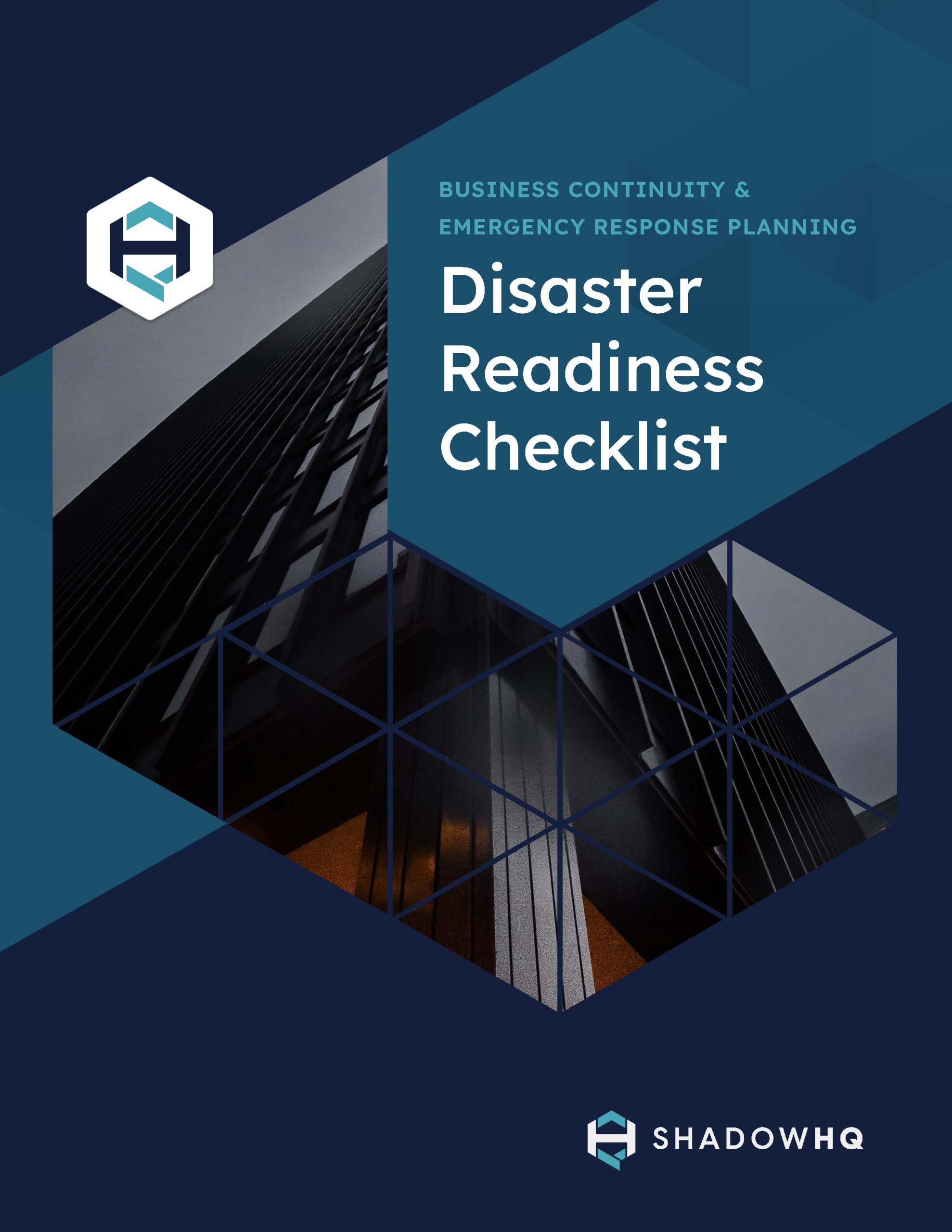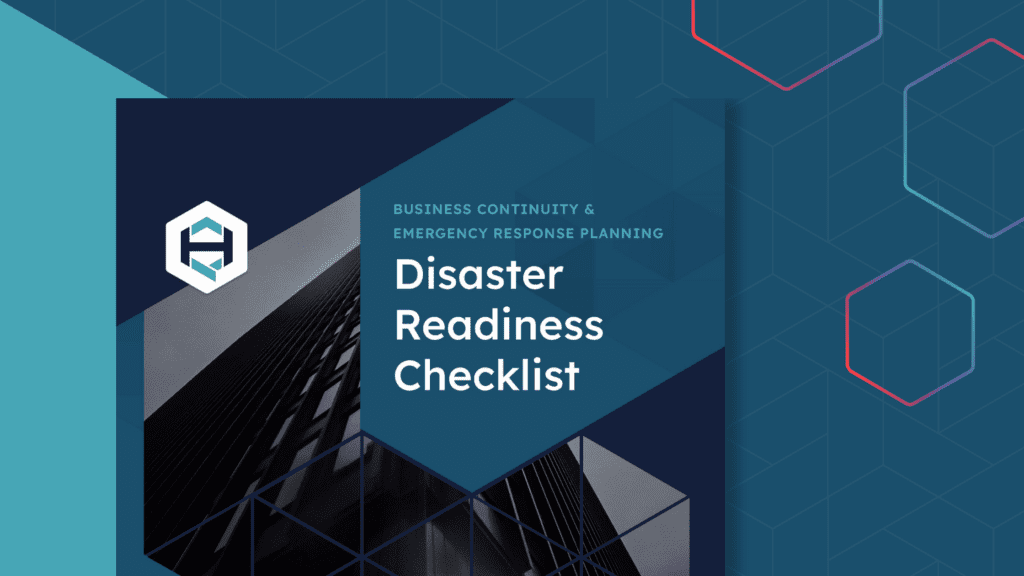How to Maximize Cybersecurity ROI in 2025
In 2025, security leaders face a paradox: despite increasing cybersecurity budgets, many organizations struggle to see a tangible return on investment (ROI). The culprit? Tech bloat. Too many tools in the security stack, overlapping functionalities, and a lack of strategic alignment create inefficiencies that waste resources while failing to truly harden the security posture.
For CISOs, CSOs, and VPs of IT, the key to getting more ROI from cybersecurity investments isn’t just about adding more tools—it’s about ensuring that cybersecurity is treated as a business-wide priority. A holistic, cross-functional approach to cyber incident preparedness and response is one of the most effective yet underutilized strategies to maximize security investments.
Beyond the SOC: why cybersecurity ROI hinges on business-wide engagement
Traditionally, organizations treat cybersecurity as an IT problem, with security teams focused solely on detecting threats, ejecting attackers, and restoring affected systems. But this narrow approach ignores the broader business impact of a cyberattack.
A significant portion of financial loss from a breach doesn’t come from direct system downtime but rather from lost sales, reputational damage, legal repercussions, and customer churn. When an attack happens, how well an organization responds beyond IT recovery can determine whether the financial fallout is minimal or catastrophic.
The fix? Integrate all critical business functions—sales, marketing, customer service, PR, and executive leadership—into cybersecurity preparedness and response efforts.

How cross-functional cybersecurity boosts ROI
When cybersecurity is approached as a company-wide priority, organizations can:
- Minimize revenue loss by enabling sales and customer service teams to proactively address customer concerns and prevent mass cancellations.
- Control the public narrative through well-orchestrated PR and media management to mitigate reputational damage.
- Ensure legal and compliance readiness to reduce the risk of regulatory fines and lawsuits.
- Enhance operational resilience by ensuring that all departments know their roles in incident response, speeding up recovery and minimizing downtime.
- Reduce tool sprawl and lower costs by consolidating multiple toolsets with solutions like ShadowHQ, which provides a secure out-of-band bunker that enables seamless collaboration during crises. With ShadowHQ, organizations can eliminate legacy response methods like call trees and inefficient primary communication reliance, improving response time while cutting costs.
This holistic approach extends cybersecurity beyond IT infrastructure, reinforcing the organization’s overall resilience and ensuring investments deliver maximum value.
Implementing a cross-functional cybersecurity strategy
Maximizing cybersecurity ROI requires an approach that integrates security into business operations. Here’s how to make it happen:
1. Develop a comprehensive incident response plan (IRP)
An effective IRP should include more than just technical recovery. It must outline how customer communication, media relations, and legal considerations will be handled. Define clear roles and responsibilities across departments to ensure alignment when an incident occurs.
2. Establish cross-functional response teams
Every critical business function should have a designated role in cybersecurity incident response. For example:
- Sales & customer service: Handle customer concerns to prevent churn.
- PR & marketing: Manage crisis communication and ensure transparency.
- Legal & compliance: Address regulatory reporting and potential liabilities.
- IT & security teams: Lead the technical recovery process.
3. Conduct tabletop exercises
Run realistic cyberattack simulations that involve all relevant teams. These exercises help organizations test their readiness, refine communication protocols, and identify gaps in their response strategy before a real crisis hits.
4. Implement clear communication protocols
Define when and how updates should be shared internally and externally during an attack. Consistent messaging across all teams prevents misinformation and reassures customers, partners, and stakeholders.
5. Train employees on cybersecurity awareness
Security is everyone’s responsibility. Regular training sessions ensure employees understand cybersecurity risks, recognize threats, and follow best practices to mitigate them. Empowering employees reduces human error, which remains one of the biggest vulnerabilities in security.
Short-term and long-term gains
Organizations that adopt a cross-functional cybersecurity approach see immediate and lasting benefits:
Short-term benefits
- Faster technical and operational recovery, reducing downtime.
- Minimized financial impact through proactive customer management.
- Controlled public perception, limiting reputational damage.
Long-term benefits
- Stronger customer trust and brand resilience.
- Enhanced incident response maturity over time.
- Improved compliance posture, reducing regulatory risks.
- Lower cybersecurity costs by consolidating security tools with solutions like ShadowHQ, which delivers an award-winning security response platform recognized as the Cybersecurity Breakthrough Awards’ Security Response Solution of the Year.

The bottom line: Cybersecurity is business resilience
In today’s digital landscape, cybersecurity isn’t just about stopping hackers—it’s about ensuring business continuity, protecting revenue, and maintaining trust. The organizations that thrive in 2025 will be those that move beyond tech bloat and security silos, embedding cybersecurity into their entire business strategy.
By aligning security investments with business resilience and leveraging solutions like ShadowHQ to consolidate toolsets, companies can get more ROI from their cybersecurity spend, ensuring that every dollar contributes to both security effectiveness and overall organizational strength.
Now is the time to shift the mindset: Cybersecurity isn’t just an IT problem—it’s a business-wide priority. Book a personalized demo today to learn how ShadowHQ can help your business improve cybersecurity ROI.
EWEBINAR
Experience the ShadowHQ platform
Walk through a cyber breach scenario in a 15 minute demo.

GUIDE DOWNLOAD
Disaster Readiness Checklist
When an emergency happens, every minute counts.


